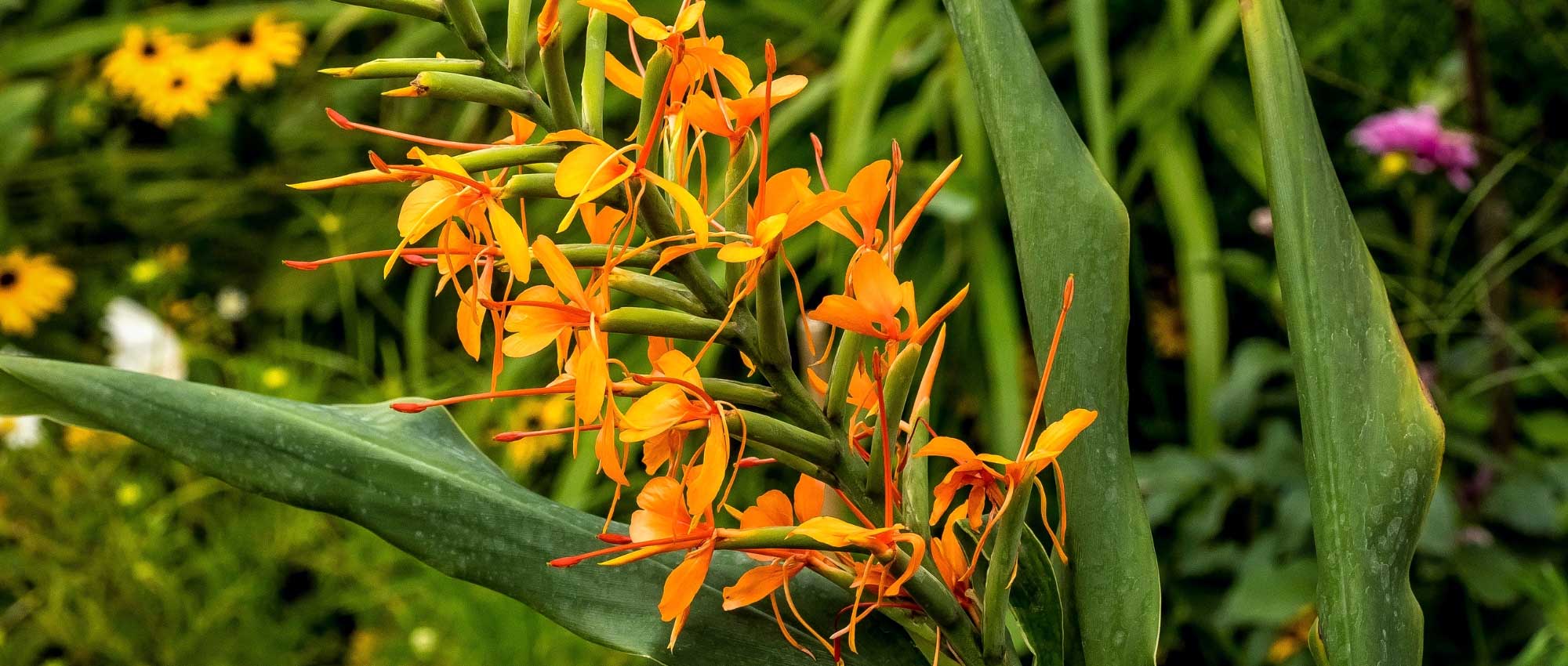
Hedychium : how to plant, to grow and care for
Contents
Hedychiums in a nutshell
- Hedychiums bring a very exotic style to the garden!
- They are large rhizomatous perennials with ample, generous foliage
- They bear splendid flower spikes in late summer, in warm tones, often yellow or orange
- Hedychiums are original plants, too rarely cultivated in our gardens
- They are vigorous and have rapid growth
- Despite their exotic appearance, they are not particularly tender plants
A word from our expert
Sometimes called ornamental ginger or Longose, Hedychiums are large rhizomatous perennial plants with lush growth. They are prized for their very exotic appearance and impressive flowering, in upright clusters made up of numerous flowers. These often display warm hues and can be yellow, orange, red or white. Hedychiums bear large elongated leaves, generally green, arranged regularly along stems. They are particularly vigorous plants that grow quickly. Hedychium is a little-known and undercultivated perennial… Yet, it is the perfect plant to add an exotic touch to the garden!
Flowering of Hedychiums takes various forms and colours depending on variety. Discover, for example, Hedychium gardnerianum with its large clusters of pale yellow flowers, Hedychium coccineum ‘Tara’ with vivid orange flowering, or Hedychium coronarium, which offers an elegant white flowering.
Despite their tropical appearance, Hedychiums are not as tender as they seem! Some species tolerate down to -15 °C and can be planted outdoors in most regions of France. However, it is preferable to protect them from cold in winter with a thick mulch. They can also be grown in pots and brought under cover for winter. Apart from this care to protect them from cold, Hedychiums are plants fairly easy to grow. They thrive in rich, fertile soils that remain relatively cool in summer. Plan to water them during summer and to supply well-rotted compost or fertiliser from time to time.
Botany
Botanical data
- Latin name Hedychium sp.
- Family Zingiberaceae
- Common name ornamental ginger, longose
- Flowering between August–September and November
- Height between 1 and 2.5 m
- Exposure partial shade or non-burning sun
- Soil type rich, humus-bearing, cool and draining, deep
- Hardiness variable, between –5 °C and –15 °C
Hedychiums are imposing herbaceous perennial plants with a rootstock, offering lush foliage and unusual flowering in erect clusters. They include about 90 species from Asia, notably the Himalayan region and Nepal. In nature, they are mainly found in bright, light woodland, both in lowlands and at altitude (some species grow up to 3,000 metres, which probably explains their fairly good hardiness). Some species are even epiphytic, growing directly on tree trunks rather than in soil.
Name of Hedychium comes from Greek hedys, meaning “sweet”, and chion, meaning snow, alluding to white, fragrant flowering of Hedychium coronarium.
Hedychiums are closely related to ginger, to the point they are sometimes called “ornamental ginger”. They belong to same family as ginger, Zingiberaceae (more than 1,500 species). In this family are also other spices such as turmeric and cardamom, as well as plants sometimes grown for ornamental interest, like Roscoea and Alpinia.
Despite tropical appearance, Hedychiums are not as tender as one might think. Hedychium forrestii and densiflorum, among most hardy, tolerate down to –15 °C, and Hedychium coronarium can withstand about –10 °C.
Hedychiums form large clumps made of erect stems, thick and very straight, unbranched, bearing leaves inserted in a regular pattern. These are fairly tall, imposing plants that grow quickly and often reach between 1 and 2.5 metres. In wild, some species attain up to 5 metres. Hedychiums send up robust, erect, very straight, unbranched stems. These stems bear leaves arranged with great regularity.
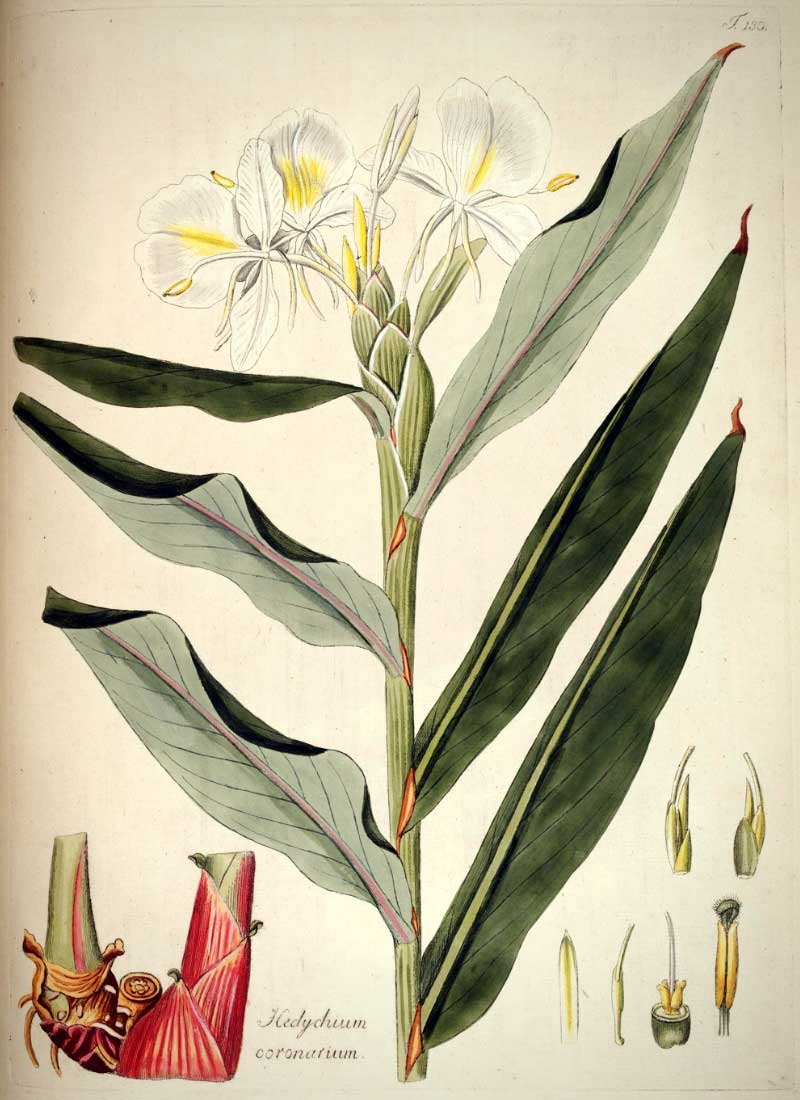
Hedychium coronarium: botanical illustration
Hedychiums flower in late summer–early autumn: depending on variety, flowering occurs between August and November. Timing of flowering also depends on climate and region where grown: flowers appear earlier in mild climates (August) and later where conditions are cooler (September–October).
Hedychiums then bear erect clusters made up of a large number of flowers. These clusters measure between 10 and 35 cm long and are terminal. Generally, inflorescences open from base towards tip. They appear fairly airy and light… except for Hedychium densiflorum: as name suggests, this species has dense inflorescences with flowers packed relatively close together. Hedychium spicatum, by contrast, looks totally different, with just a few white, light, irregular flowers.
Hedychium flowers are valued for warm hues, varying with variety. They can be white, cream, yellow, orange or red. Flowers often bear long red stamens that are highly decorative.
Flowers are irregular, with bilateral symmetry, suggesting butterfly shapes (an idea also found in Hedychium coronarium, sometimes called “butterfly ginger”). Each flower is borne by a green tubular bract. Flowers face outwards from spike. They consist of petals fused into a tube and open into very narrow, linear lobes. Each flower bears a long fertile stamen, often red, as well as staminodia (sterile stamens) that take the form of petals. These are more or less broad depending on species, well developed in Hedychium coronarium but very narrow in Hedychium yunnanense, giving that inflorescence an airy, transparent look.
Hedychium flowers are fragrant. They are also melliferous, appreciated by bees that visit them.

Flowering of Hedychium gardnerianum (photo J.J. Harrison) / Detail of a flower of Hedychium gardnerianum (photo Pancrat) / Flowering of Hedychium yunnanense (photo Peganum)
Hedychium greenii has the particularity of producing small seedling(s) on inflorescences once spent! These can be removed and replanted in garden. This allows the species to spread easily, since seedlings simply need to detach from mother plant to land on soil and root.
Hedychium foliage is very lush, making plant decorative even when not in flower. Leaves are very elongated, lanceolate, tapering to a point at tip (acuminate). They are simple, entire, and measure between 30 and 50 cm long. Lamina is sheathing at base. Leaves have a graphic appearance. They are arranged regularly, alternate on each side of stem, in one plane.
Leaves are green and set off the flowering well. There are also some variegated cultivars, such as ‘Tahitian Flame’. Leaves of Hedychium greenii have a beautiful reddish-purple colour on underside.

Hedychium flavum: overall view and detail of foliage (photos Krzysztof Golik) / Leaves of Hedychium greenii
Hedychiums are deciduous, above-ground parts die back for winter while rootstock remains alive and protected from cold in soil. It will send up new shoots and leaves in spring when temperatures warm. Emergence is fairly late, around May–June… which can make it seem as if plant has gone, but usually one just needs to wait a little. Once above ground, Hedychiums grow quickly. They are vigorous plants that develop lush foliage but require feeding or organic matter to support that growth.
Hedychiums have thick, fleshy, ramified rootstocks. These are storage organs that also allow plant to propagate, spread and gain ground. Rootstocks have ginger scent.
In autumn, after flowering, Hedychiums produce capsules containing seeds. When ripe, capsules split into three parts to reveal bright red seeds. Interior of capsules is quite decorative, vivid orange. Seeds are dispersed by animals that eat them (notably birds, but also mammals). However, Hedychium must be grown in a very mild climate to have a chance of setting seed.

A Hedychium gardnerianum in fruit (photo Ixitixel) / Detail of fruits (photo Maja Dumat)
Read also
How to design a tropical garden?Main Hedychium varieties
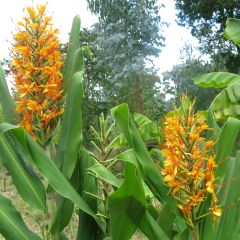
Hedychium coccineum Tara - Ginger Lily
- Flowering time September to November
- Height at maturity 1,20 m
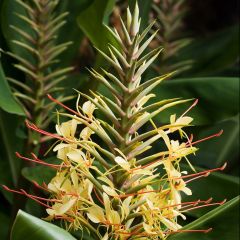
Hedychium gardnerianum - Ginger Lily
- Flowering time September, October
- Height at maturity 1,50 m
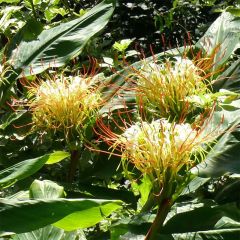
Hedychium ellipticum - Ginger Lily
- Flowering time October to December
- Height at maturity 1,20 m
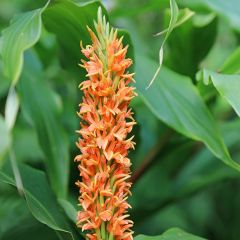
Hedychium densiflorum
- Flowering time September to November
- Height at maturity 1,30 m
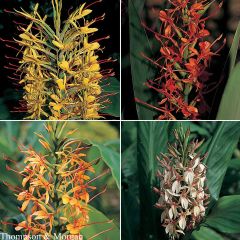
Hedychium gardnerianum Species Mixed Seeds
- Flowering time September to November
- Height at maturity 2 m
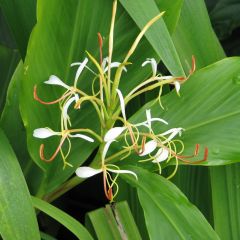
Hedychium spicatum - Ginger Lily
- Flowering time October, November
- Height at maturity 1,50 m
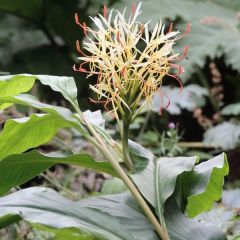
Hedychium yunnanense - Ginger Lily
- Flowering time October, November
- Height at maturity 1,20 m
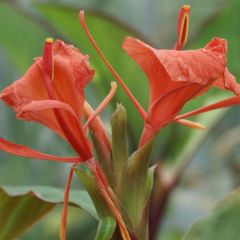
Hedychium greenii - Coral Ginger
- Flowering time October, November
- Height at maturity 1,20 m
Discover other Hedychium
View all →Available in 0 sizes
Available in 1 sizes
Available in 1 sizes
Available in 1 sizes
Available in 1 sizes
Available in 1 sizes
Available in 1 sizes
Available in 1 sizes
Available in 1 sizes
Available in 1 sizes
Planting
Where to plant?
You can grow Hedychium in full sun or partial shade, but it is important to choose a bright spot. If the position is too shady, Hedychium flowering will be less abundant. Plant it in a fairly warm situation, in a spot sheltered from wind. A sheltered spot, such as a small courtyard or a patio, would be ideal.
Hedychiums appreciate humus-rich, fertile soils, so it is best to add well-rotted compost when planting. They also like deep, light soils.
In general, Hedychiums also prefer free-draining soils that remain relatively dry when plant is in dormancy. However, it is preferable that soil is cool, even moist, in summer. Hedychium grows quite well in heavy, clay soils. You can also position them near a pond.
Regarding pH, Hedychiums prefer neutral to slightly acidic soils.
Hedychiums can quite happily be planted in open ground, provided you do not live in a region that is too cold (notably in the mountains), and provided they are protected with a good layer of mulch. Otherwise, prefer growing in a pot so you can easily bring it under cover.
During their growth and flowering period, Hedychiums appreciate tropical conditions, with warmth and humidity.
When to plant?
Plant Hedychiums in spring, around April. It is also possible to do so in autumn if you live in a mild climate, or if you grow Hedychium in a pot.
How to plant?
Hedychiums can be bought in pots or as bare roots. If planting several Hedychiums, leave at least 60–70 cm between them.
- If in pots, start by placing them in a basin filled with water.
- While the rootball rehydrates, dig a planting hole about three times the size of the rootball.
- Do not hesitate to add coarse materials to improve water infiltration, for example gravel. We also recommend adding some well-rotted compost to enrich the soil.
- Remove the rootball from its pot and plant it, or, if bought as bare roots, place the rootstock directly in soil.
- Backfill the planting hole with soil.
- Water generously.
We recommend applying a good layer of mulch, which will help keep the soil cool for longer while limiting weed growth.
Once established, it is best not to disturb Hedychiums. They do not like being moved.
You can also grow Hedychium in a pot, which will allow you to bring it easily under cover for winter. Choose a wide, deep container, place a drainage layer at the bottom (gravel, clay balls…) and use a rich, light potting compost.
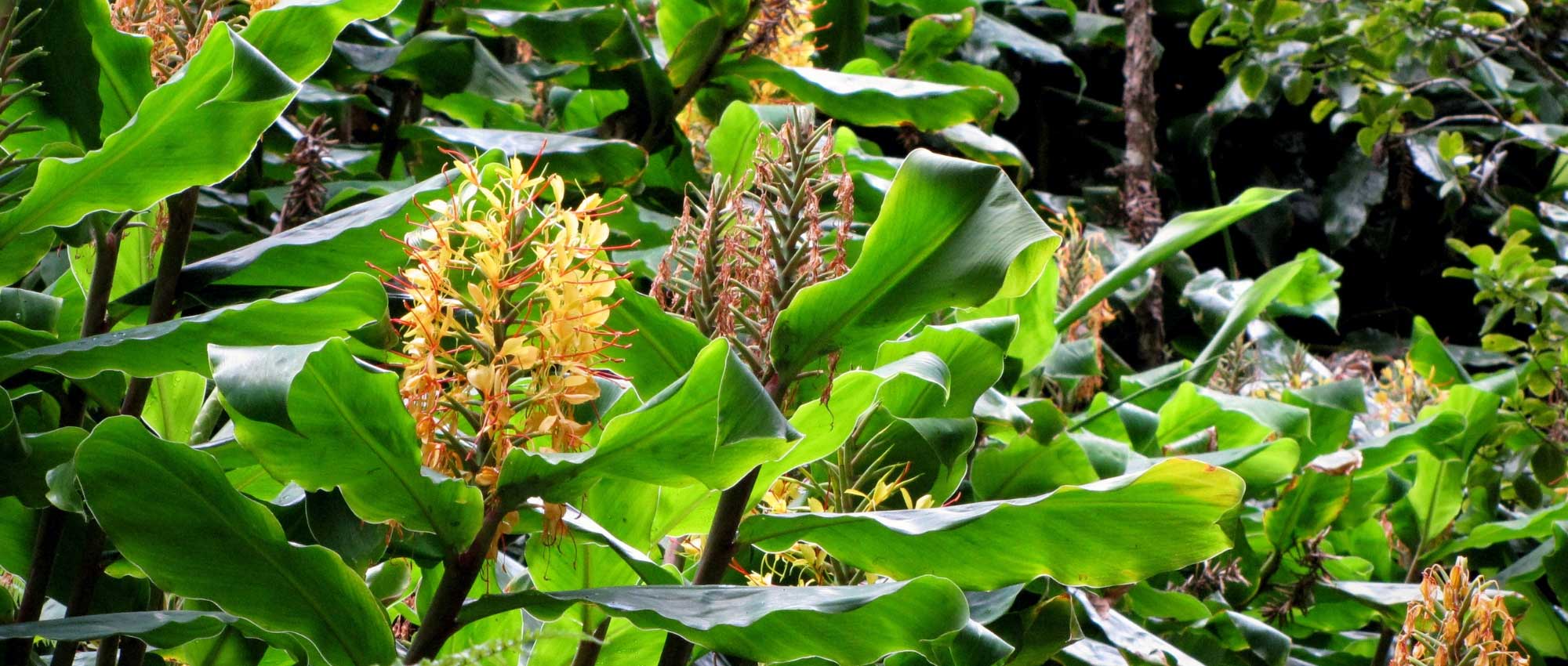
Hedychium gardnerianum (photo Forest and Kim Starr)
Care
Provide regular watering during summer, so that the soil stays cool, even moist. Watering should be increased if you grow the plant in a pot. Flowering will be more attractive and abundant if soil is cool, whereas summer drought may interrupt flowering. Conversely, it is better for substrate to be fairly dry in winter to prevent the rootstock from rotting.
Hedychium will also appreciate some feeding, as it is a fairly demanding plant that prefers soils rich in minerals. In the ground, you can place well-rotted compost around the clump and work it into soil with a light fork-over.
Cut flowers when faded, for appearance and to relieve the plant.
We recommend providing protection against cold. At start of winter, around December, cut stems back to base, trimming them close to ground. Then lay a thick layer of mulch, for example made of dead leaves (at least 30 cm thick). Besides protecting the plant, laying mulch on the stump will add organic matter to soil and thereby enrich it. You can also bring the plant under cover for winter, especially if grown in a pot (or if you live in a cold area).
Greatly reduce watering in winter. It is preferable for substrate to be relatively dry while the plant is in dormancy. In summary, Hedychiums appreciate heat, humidity and feeding in summer, but prefer to be cool and dry in winter.
Do not worry if you do not see Hedychium restart in spring. It can emerge quite late, sometimes producing new stems only in June. It waits for temperatures to be mild enough to resume growth.
Hedychium is not susceptible to diseases. Regarding pests, watch for aphids. These small insects settle on the plant and suck sap, which weakens it. We recommend treating with black soap. Likewise, Hedychiums are sometimes attacked by red spider mites (when grown under glass or indoors). As these mites favour dry atmospheres, you can get rid of them by spraying water on foliage. Gastropods — slugs and snails — sometimes chew young leaves.
Multiplication
Hedychiums can be propagated by sowing or division. Hedychium greenii has the peculiarity of producing seedlings in place of flowers once the flowers have faded. You can pot them up in soil to propagate the plant.
Sowing
Seeds should be sown immediately after harvesting or purchase, without delay. They lose their seed viability over time.
- Prepare a pot with potting compost.
- Sow the seeds by placing them on the surface.
- Cover them with a thin layer of sieved compost or vermiculite.
- Water with a fine spray.
- Place the pot under cover in a bright spot, with a temperature between 20 and 25 °C.
- You can cover the pot with plastic film to maintain a humid atmosphere.
Seeds may take a long time to germinate (between 15 days and two months). Continue to water regularly until germination so the substrate remains relatively cool.
Once seeds have germinated and the seedlings are large enough to handle, you can pot them on into individual pots. Harden them off gradually before planting them permanently in the open ground.
Division of rootstocks
Hedychiums gradually form large clumps. As they are vigorous plants with rapid growth, you can divide them from time to time to replant elsewhere or give to friends. This helps to limit the size of the clumps a little. Division is carried out in spring.
- Start by digging up the plant or removing it from its pot.
- Cut the rootstock into several segments. Use a disinfected, sharp knife to make a clean cut.
- Place each piece of rootstock in a pot filled with potting compost.
- Keep the pot under cover. This allows the plant to begin its growth while protected. You can plant it out in the open ground later once it has developed well.
To divide Hedychium grown in open ground, you can dig up the whole clump if it is not too extensive and then divide it, or simply take part of it and leave the rest in the ground.
Association
Hedychiums are obviously perfect for creating a tropical-style, exotic garden. Plant them among large decorative foliage such as arborescent ferns, palms, banana plants, castor oil plant… Choose plants with majestic, giant leaves, such as Tetrapanax, Colocasia or Gunnera. Also discover the large rounded leaves of Astilboides tabularis, or very dissected foliage of Datisca cannabina. All these plants will give your garden a tropical aspect. You can aim to create jungle effect: an overgrown tangle of plants, messy, very natural and luxuriant, yet transporting. Don’t hesitate to include a few lianas, such as akebias, clematis, passionflowers… Also discover pendulous red-and-yellow flowers of Abutilon megapotamicum. You’ll create a garden that transports you, makes you travel, and gives impression of finding yourself in the Amazon or in luxuriant forest of a far-off continent.
Also think about adding other plants with spectacular flowering, favouring shades of red – orange – yellow. Choose, for example, cannas, crocosmias, kniphofias, lantanas, daylilies, ligularias… Their flowering will blend wonderfully with that of Hedychiums! If you live in region with mild climate (elsewhere, you can grow it in a pot and bring it indoors for winter), enjoy superb flowering of Strelitzia reginae. For decorative and colourful foliage, discover that of Libertia peregrinans.
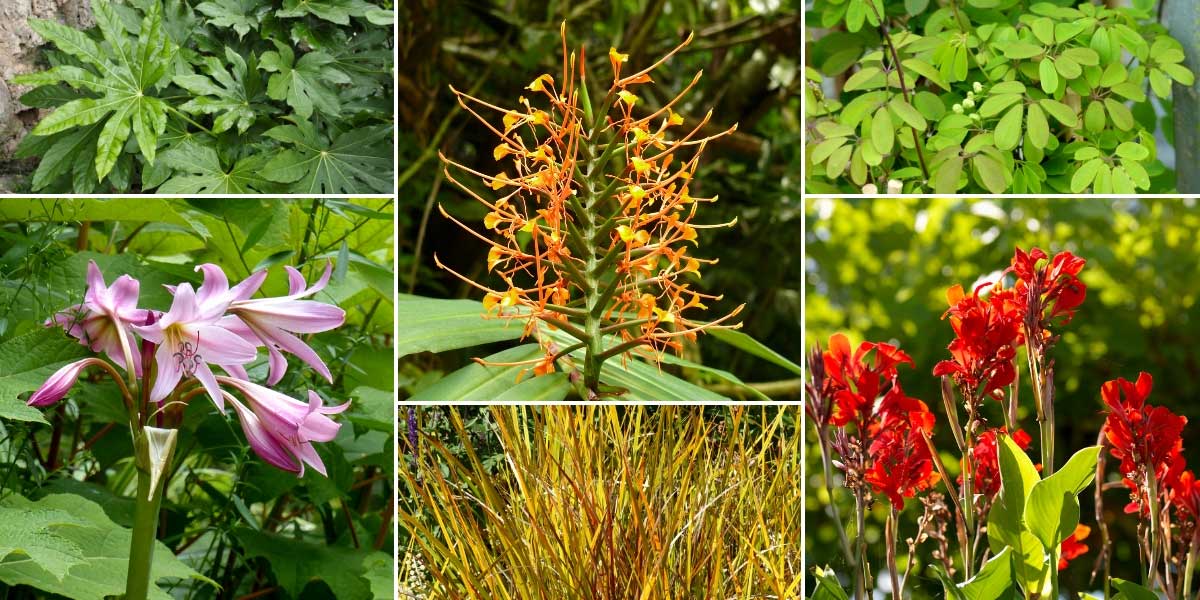
Hedychiums fit very easily into an exotic-style garden. Fatsia japonica, Crinum powellii, Hedychium coccineum (photo Swati Sidhu), Libertia peregrinans, Akebia quinata and Canna ‘Brilliant’ (photo Steven Bemelman – iBulb)
You can also choose, to accompany Hedychiums, other unusual, little-known plants. Opt for, for example, Brugmansia, Roscoea, Lycoris aurea, Scadoxus… Not forgetting elegant flowering of Crinum and Cardiocrinum. Your garden will be a never-ending source of wonder, continually astonishing and surprising visitors, with uncommon flowering displays, unusual shapes and colours!
Finally, as Hedychiums appreciate soil that stays cool in summer, you can plant them near a pond, in company of ferns, Gunneras, ligularias, meadowsweet (Filipendula ulmaria)… This will create a cool, natural atmosphere — an ideal garden spot for relaxation and to recharge.
→ Discover other pairing ideas with Hedychiums in our advice sheet !
Did you know?
- Cuba’s national emblem
The species Hedychium coronarium, known as Flor de Mariposa, is Cuba’s national flower, an emblem of resistance to Spanish occupation. As Mariposa means ‘butterfly’ (alluding to the shape of the flowers), this Hedychium is sometimes called ‘butterfly ginger’.
Useful resources
- Discover our Hedychiums
- An article by Stéphanie on our blog – Potted plants and watering: coping with extreme heat during your absence
- An article by Michael – Hedychium, an exotic for our climates
- To pair with Hedychium – Exotic ambience
- An article by Ingrid – 10 exotic and hardy plants for Jungle garden
- Our advice sheet: 8 summer bulbs with orange flowers
Frequently asked questions
-
I can't see my Hedychium reappearing after winter. Is it dead?
Above-ground parts die back in autumn in cold weather, and the plant only reappears late in spring, around May or June, when conditions are favourable (fairly mild temperatures, cool soil)… Generally, just wait a little!
-
Young leaves on my Hedychium look nibbled. What should I do?
Slugs and snails are responsible. Protect your Hedychium by spreading sand or sawdust to create a physical barrier that prevents them from approaching, or use slug pellets such as Ferramol.
-
Can I leave Hedychium in the ground over winter?
If you do not live in a particularly cold area (for example, in mountainous regions), Hedychium plants can be left in the ground, but protect them with a thick layer of mulch (at least 30 cm deep).
- Subscribe!
- Contents
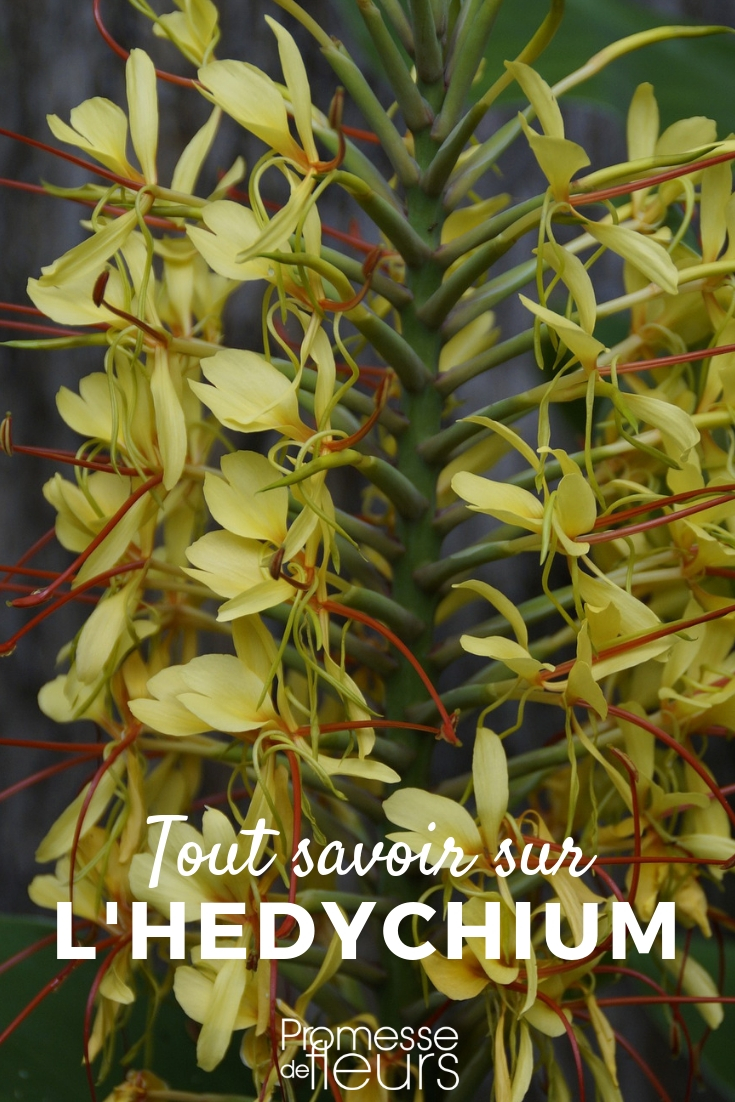































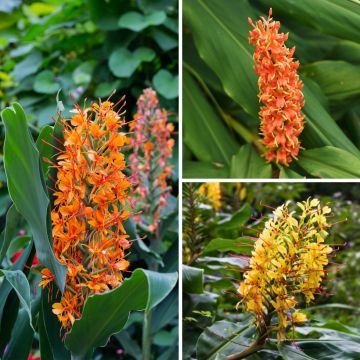



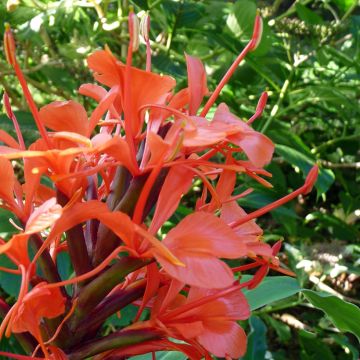
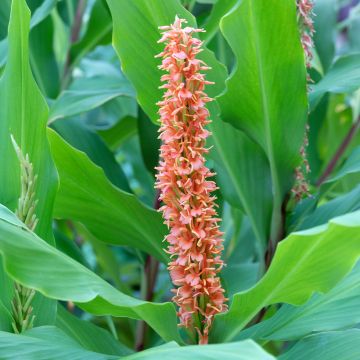
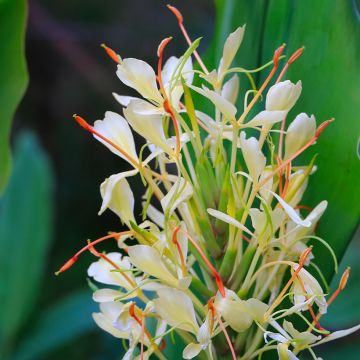
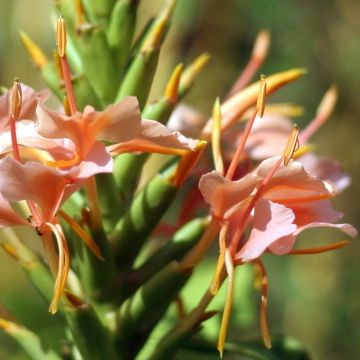
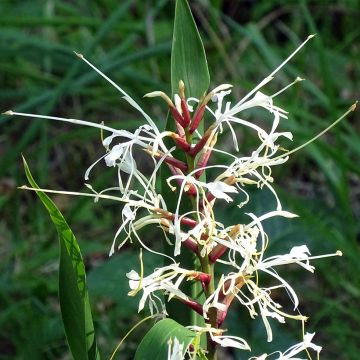

Comments